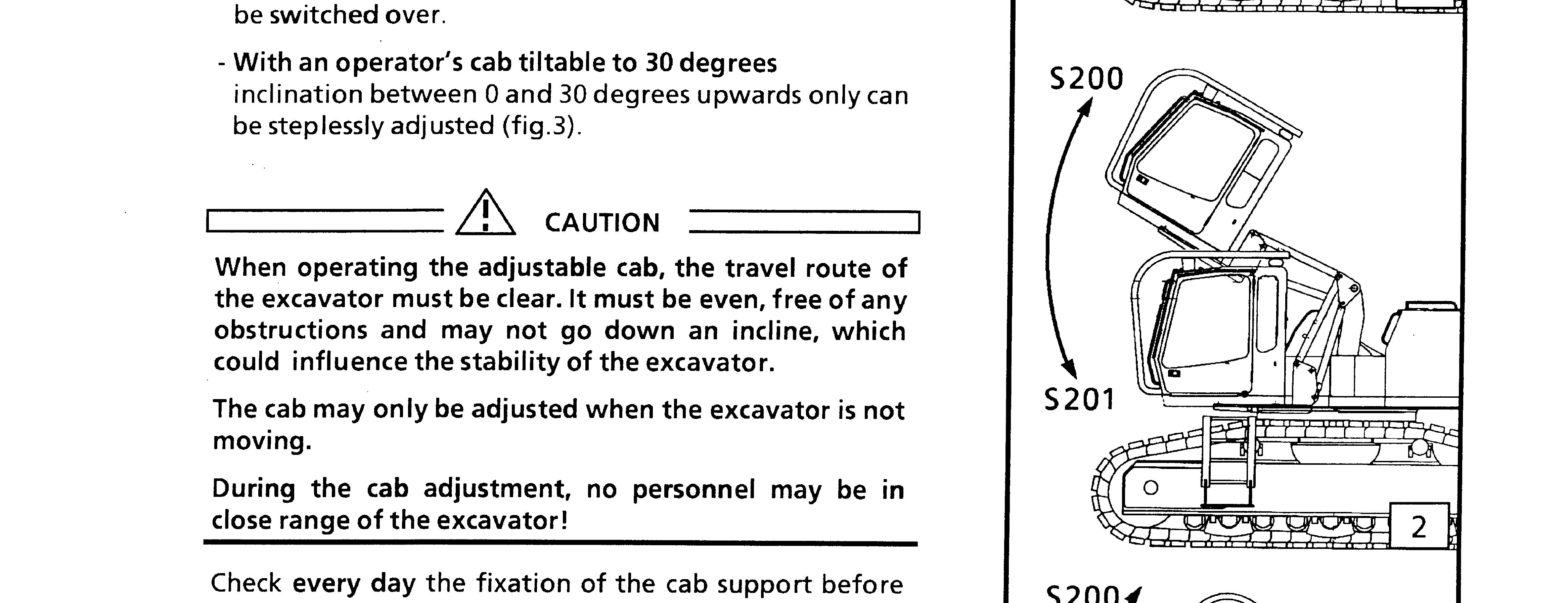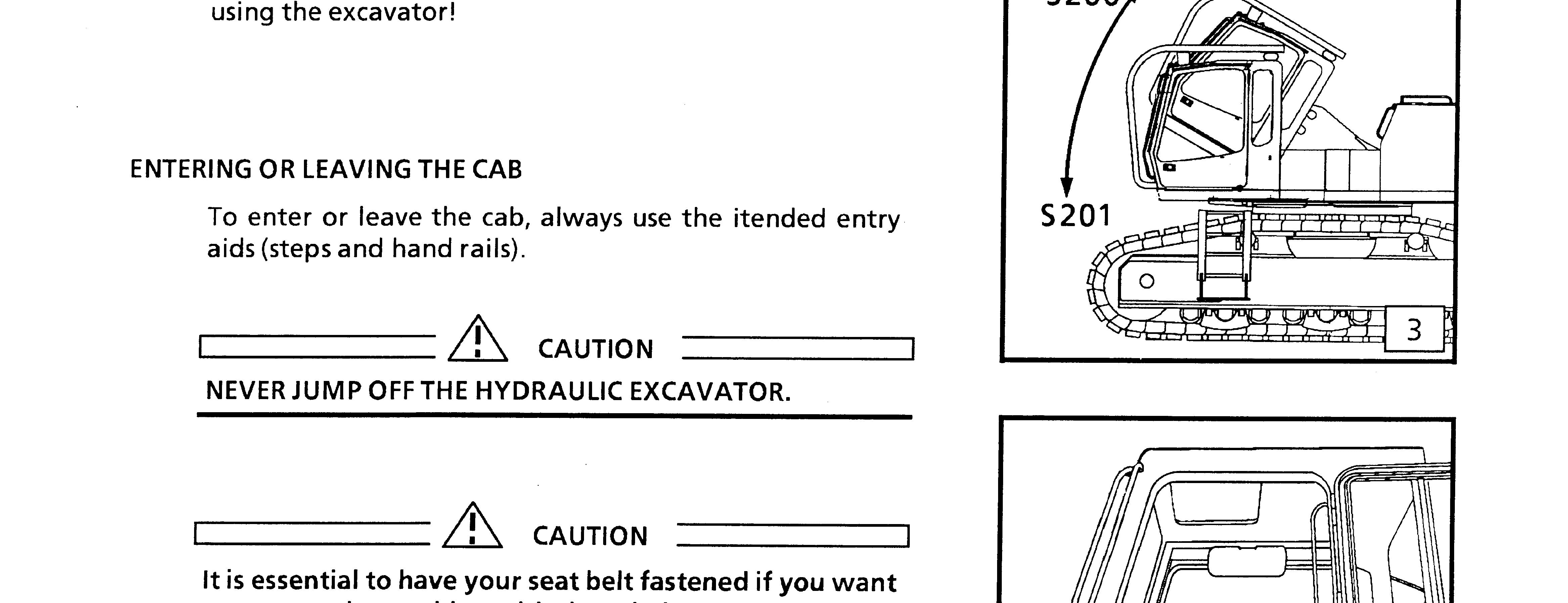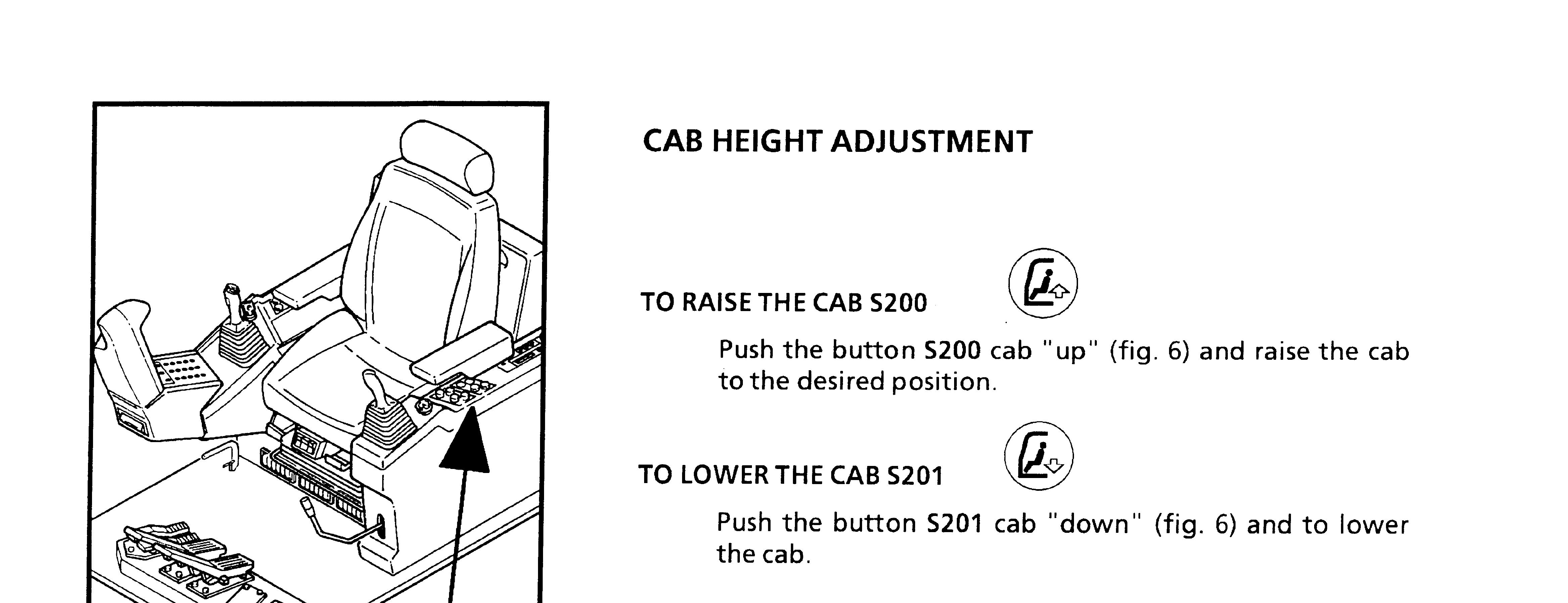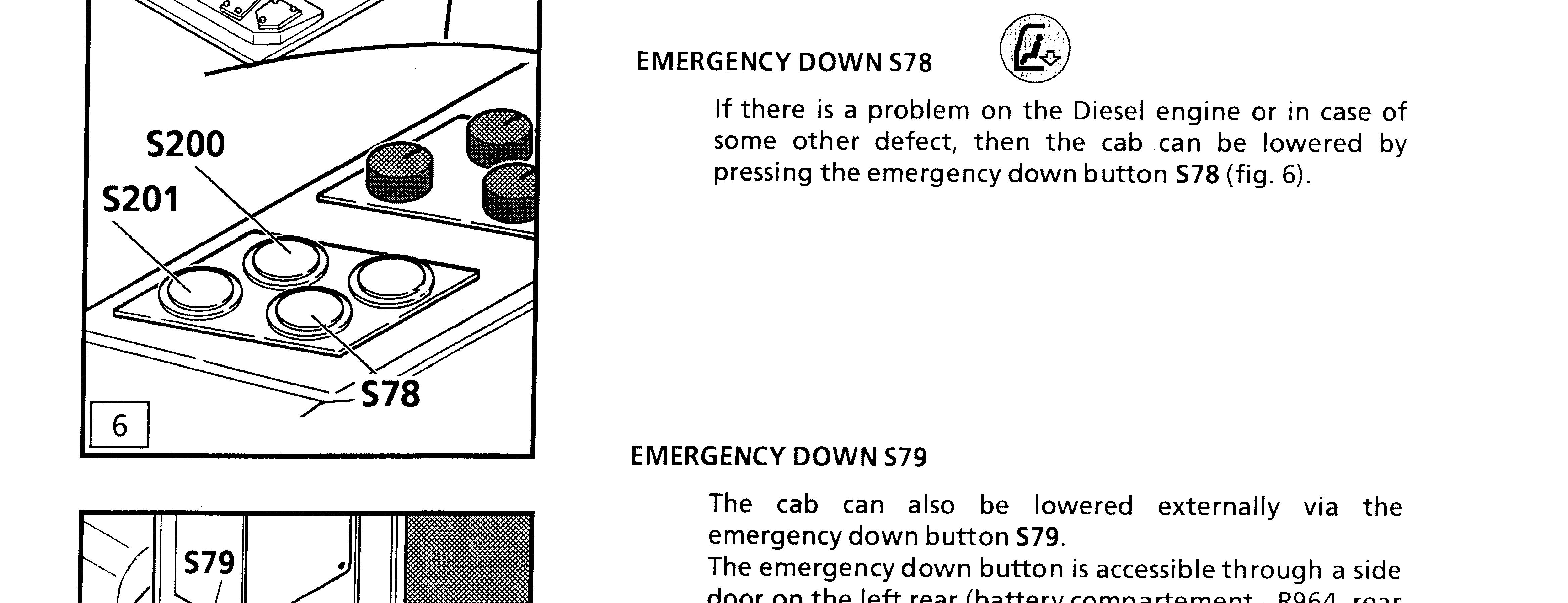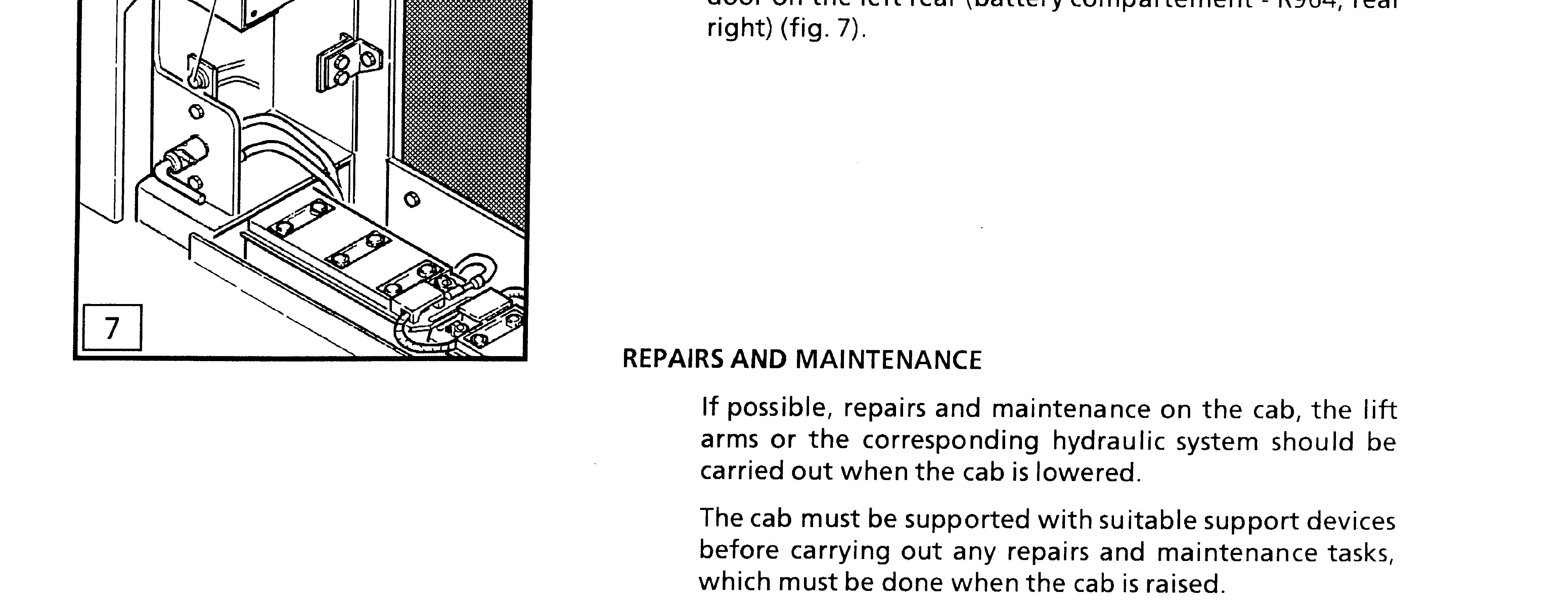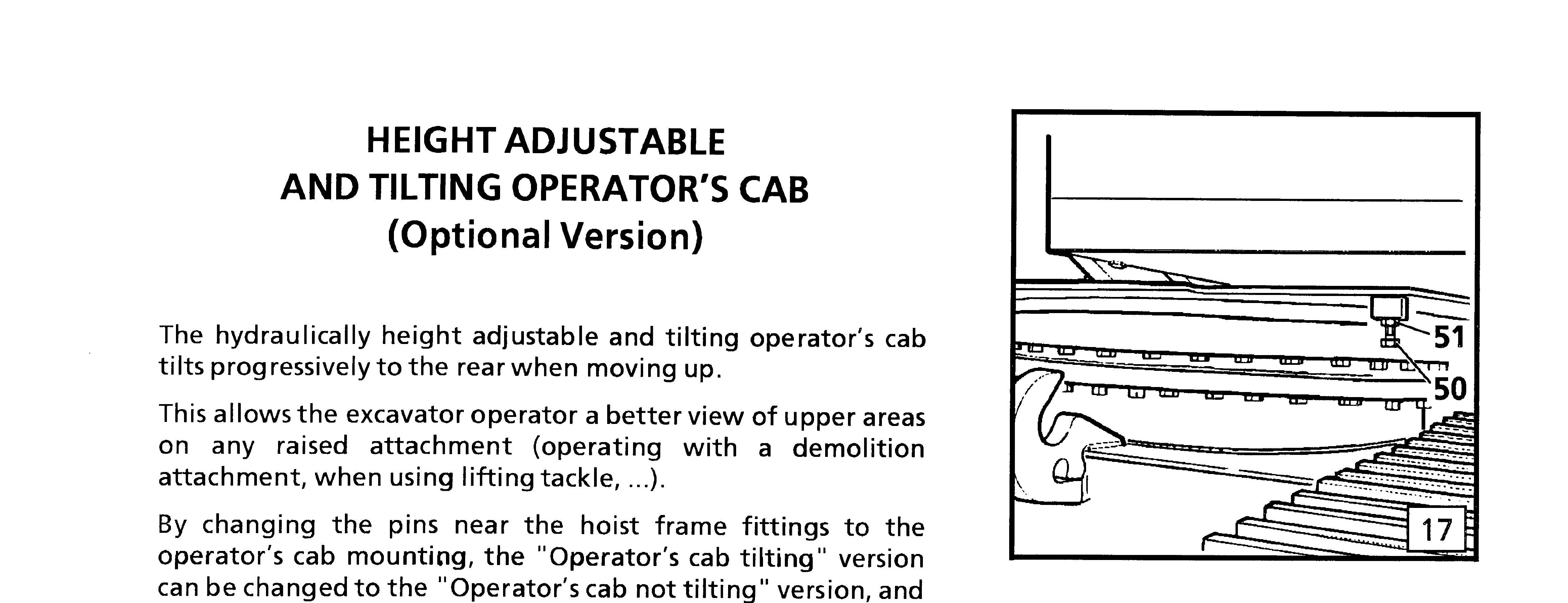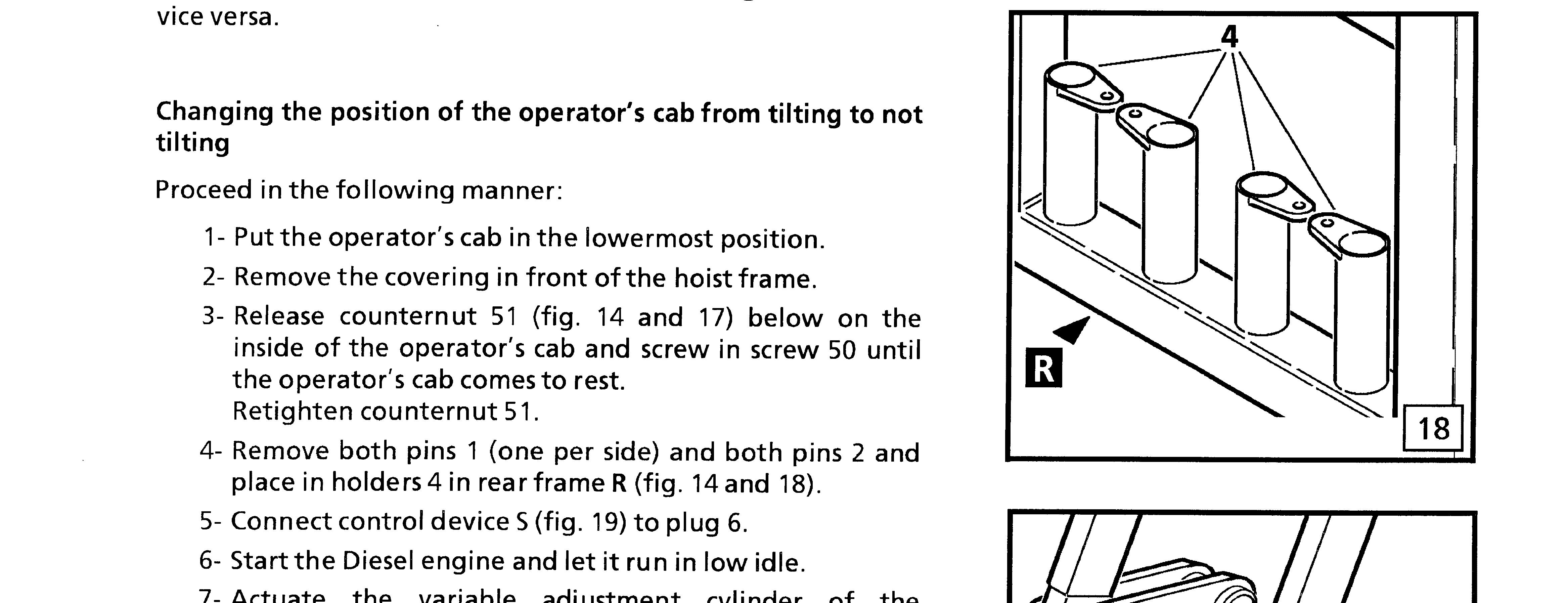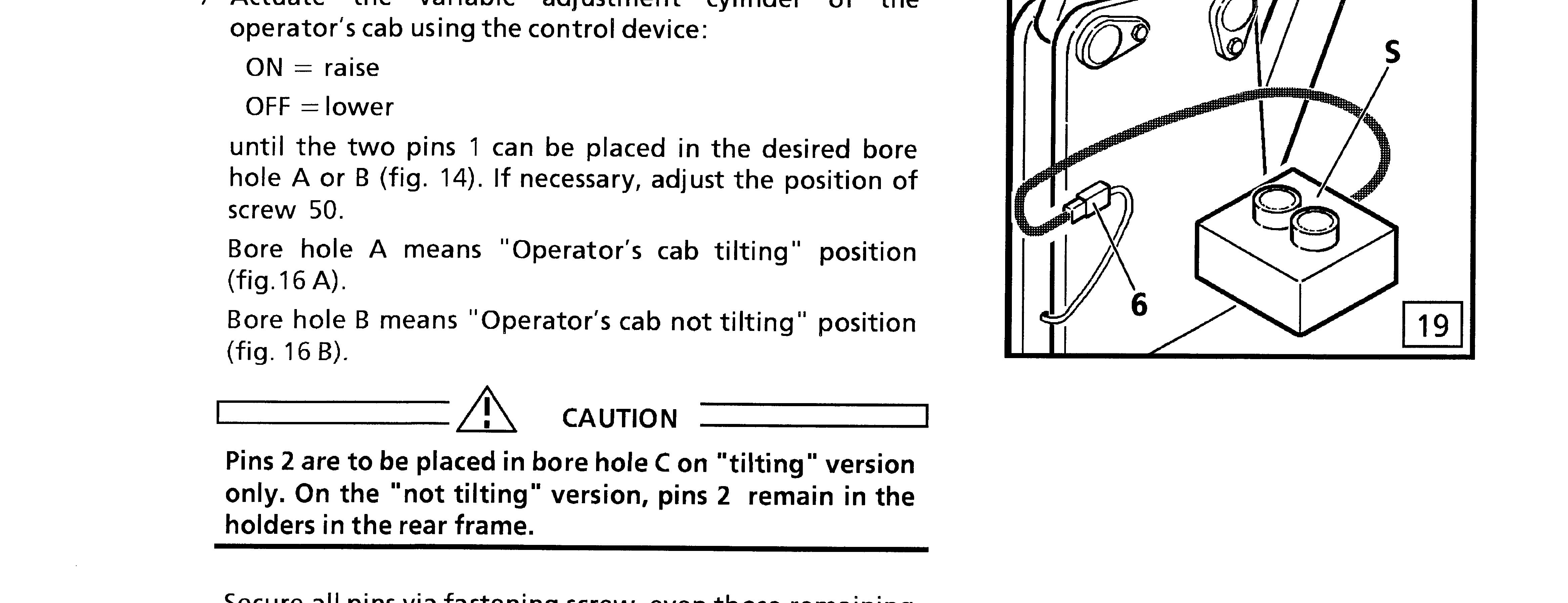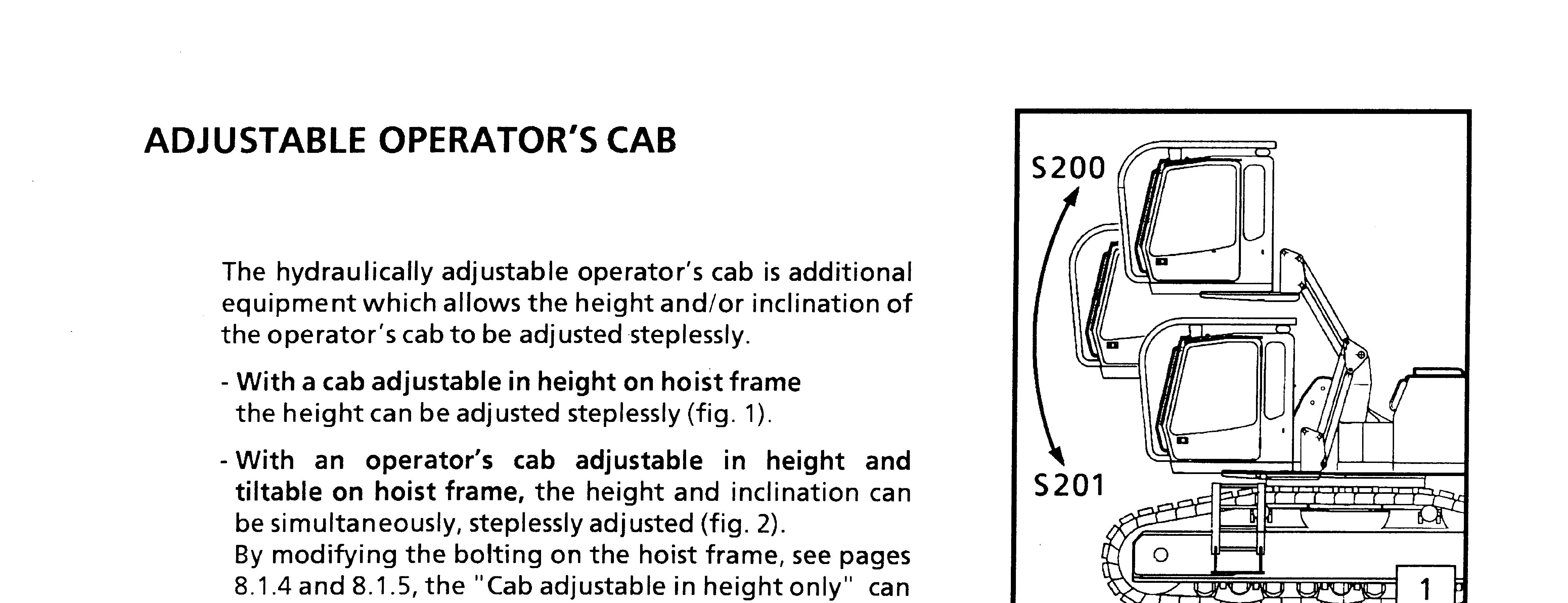
6 minute read
CONTROLS ON JOYSTICK HANDLES
Caution
On machines destined to the North American market (also called "US Version" in this manual), the functions of the touches in the handles of the left and right main joysticks differ from those for machines sold in other countries. The section below describes the functions for the "US Version" excavators.
The information of this section replaces the descriptions for S5L, S5R, S6L and S6R included on the other sections of this manual (as an example on pages 3.3 and 4.20).
FUNCTIONS CONTROLLED VIA THE SWITCHES IN THE HANDLE OF LEFT JOYSTICK 4 (fig. 1)
S55 = Swing brake control in semi automatic mode (See page 4.16).
S5L = Lifting magnet ON / OFF
S5M = Reserve
S5R = Travel alarm cut-off
Operation of lifting magnet
Depressing the touch S5L alternately energizes and de energizes the lifting magnet.
Travel alarm cut-off
Each time the travel pedal is pushed, the travel alarm will sound automatically.
This sound can be silenced earliest 10 seconds after travel start with push button S5R

The travel alarm will be reactivated with every new travel operation.
Pre selection of the travel direction
See the description on page 4.10.
FUNCTIONS CONTROLLED VIA THE SWITCHES IN THE HANDLE OF RIGHT JOYSTICK 3 (fig. 3)
S6L = Rotating device left (grapple, scrap shear, ...)
S6M = Reserve
S6R = Rotating device right
S57 = Pre selection of the travel direction
GUIDELINES FOR HYDRAULIC EXCAVATORS WHEN THEY ARE USED FOR LIFTING LOADS SUCH AS PIPES, GIRDERS, ETC. .
General
Overhead lifting, handling and transporting of loads such as pipes, girders, etc.(lifting operation), requires different safety guidelines than just removing, loading and unloading dirt, stone, minerals etc. (digging or excavating operation), because another person (or persons) is required to enter the swing range of the excavator in order to attach or remove the load on boom or stick.
To protect these persons attaching or removing the loads during lifting operation, certain requirements have to be met by excavators, which are used for lifting loads overhead.
Hydraulic excavators, when they are used for lifting operation, must have all the following mentioned special safety devices installed : load check valves.
A load hooking system which must ensure safe attaching and removing of the loads and be designed such that accidental unhooking or uncontrolled movement is minimized.
An overload warning device must be installed, which alerts the operator optically via a warning symbol and acoustically via a buzzer that the weight of the load is heavier than the load permitted by the rated lift capacity chart.
A boom lowering control device (such as load check valves) must be installed according to the international standard ISO 8643 to prevent unintentional lowering or dropping of the boom because of the weight of the load, which could happen if a line in this hydraulic circuit suddenly develops a leak (for example, should a hydraulic line break or a hose burst,...).
These valves are installed between the boom cylinders, see fig. 12 (or the stick cylinder) and the control valve block, directly on hydraulic pressure connections of cylinders. With a rated lift capacity chart attached inside the cab and within the view of the operator.
Danger
Never use your machine for lifting operation without it is fitted with all the above mentioned devices. Never lift loads over people.
No person may fasten or unfasten a load without approval of the operator and this person may only approach the load from one side. The operator may only approve this action when the excavator has stopped and the attachment is not moving.
Notice: Lifting tackle operations are performed as follows :
1. the operator places the attachment in position for load lifting,
2. then only the "lifters" enter the machine's zone of operation and remain in constant view of the operator during the fastening and/or unfastening procedure,
3. the "lifters" exit the machine's operating zone,
4. then only the operator can raise the load using the attachment.
Notice that the load values indicated in the lift capacity chart are valid only when the excavator is supported on all the four fully extended outriggers.
Never use the excavator for load lifting operation if it is not immobilized on its outriggers.
Travelling the excavator to transport loads is not authorized.
Only employ sling ropes and accessories which are permitted for lifting operation, regularly checked and in good condition.
The Overload Warning Device
An overload warning device does not stop a machine when the permissible load range is exceeded.
The operator and nearby personnel are only informed and alerted about the fact that the authorized lift capacity has been reached.
The overload warning device may only be used for lifting operation. For digging operation, the overload warning device must be turned off.
Function
The overload warning device warns the operator optically via a warning symbol on the display (fig. 24A) and acoustically via a buzzer when the maximum lift capacity (per ISO 10567) has been reached. The device does not turn the excavator off.
The signal is given by a pressure switch 1, which is connected with the piston bottom side of the boom cylinders.
Every reach has a corresponding lift capacity. When a load corresponding to this weight is attached, pressure is created in the boom cylinders and the overload warning device is actuated at a certain pressure.
This capacity can be changed and set by adjusting the pressure setting on the switch depending on the boom position via cam plate 2 and lever 3.
The cam plate is designed to adjust the pressure setting of the switch in relation to the boom position.
Depending on the machine type (with or without outriggers, different track or wheel base width or different types of attachments), appropriate cam plates can be installed on the overload warning device to the right of the swing ring bearing mount.
As per ISO 10567 the rated lift capacity chart indicates either 75% of the static tipping load or 87% of the hydraulic lift capacity (smaller of both).
The stability margin of 25% is valid with the machine on firm, flat ground and for full uppercarriage swing.
Operation Of Overload Warning Device
For lifting operation
Adjust the overload warning device before using it for the first time.
To put the overload warning device in operation: Move lever 3 on switch 1 into working position, Open shut off valve 5 (move it to position A),
Caution
Make sure to observe all accident prevention regulations when lifting loads with an hydraulic excavator.
Only lift loads of known weight, check your attachment data sheets for load limits, which differ by machine type.
For digging operation
The overload warning device may only be used for lifting operation
For excavating work, turn the overload warning device off as follows: Turn the overload warning device off on switch S18, Close the shut off valve 5,
Function Tests
Check all moving parts regularly for easy movement and lubricate them.
Check the function of the system daily by extending the boom cylinder all the way to build up maximum operating pressure. The overload device must then actuate the warning buzzer and indicator light.
If an excavator is used for lifting operation, it must be tested once a year for stability: Choose any combination of lift capacity / reach in the rated lift capacity chart which is valid for the attachment, which is installed on your machine, multiply the weight by 1,25 and attach this test load to the attachment, at the chosen reach, slightly lift the load, the machine may not tilt, the overload warning device must give and optical and acoustical warning signal.
Important ! This test is - besides a stability test - only a function test for the warning system (qualitative test), it does not mean that the adjustment is correct.
For this reason, the warning device must be checked once a year and adjusted, if necessary, as described below (quantitative test).
Test And Adjustment
Adjustment with boom up (point A)
Remove the cap on test point 6, mount a 0-400 bar pressure gauge 7 so the gauge is visible from the cab.
Move the boom up all the way and, if necessary, adjust bracket 8 via the eccentric plate 10 until roller 4 is exactly on the mark for point A on cam plate 2.
Turn on the warning device on the instrument panel (fig. 24, pos. S18) and open the shut off valve 5 between the warning device and the boom cylinder connection (Position A).
Move the joystick slightly, extend the boom all the way to build up the pressure set on point A on cam plate 2.
This must actuate the warning device.
If the warning device does not turn on (warning symbol and acoustical signal), the shifting point on switch 1 must be reduced.
Remove side cap and adjust screw SA (fig. 23) : turn clockwise to increase pressure, turn counter clockwise to decrease pressure. A lower shifting point is permissible.
Adjustment with boom down (point B)
Lower the boom until point B on the cam plate is reached. Build up pressure as set on point B, as follows: turn off shut off valve 5, and via an additional L-fitting 11 between pressure gauge and L-fitting 9 (fig. 21), build up pressure on the switch 1, either with a separate hand pump or via a mini test hose, connected to a pressure test point of the main control valve block for high pressure. The pressure is increased through this hose as soon as any movement is selected.
When the set pressure is reached, the overload warning device must actuate.
If this is not the case, take off the upper cap and adjust the screw SB on the switch1 (fig. 23) : turn clockwise to increase pressure, turn counter clockwise to decrease pressure.
A lower shifting point is permissible.
Reinstall caps for screws SA and SB, remove pump, mini test hose and pressure gauge, check all moving parts of the overload warning device for easy movement.
